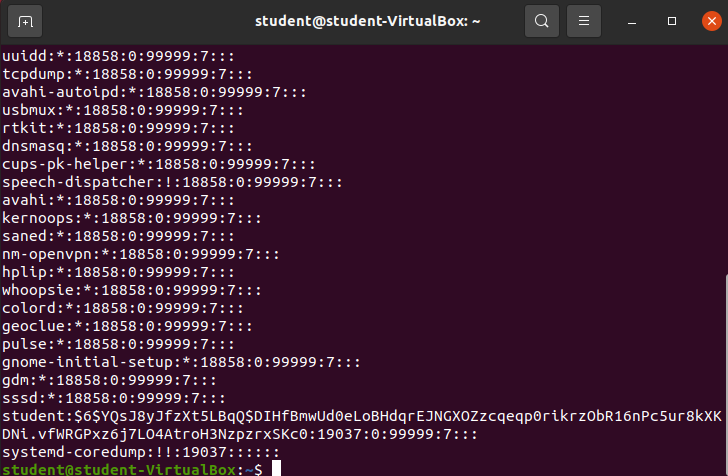Sudo
The sudo command
The sudo command stands for SUbstitute User Do. It allows you to run any Bash command as a substitute user.
The sudo command is most commonly used to run a command as the root user that has full permissions to everything on the machine.
Note
When using the sudo command to execute a command as a different user, your user must be in the sudoers file. You will be prompted to enter your password to authenticate the user and execute a command as another user. Ubuntu by default adds all new general users to the sudoers file. There is a sudoer bash command for managing the sudoers file. The sudoer file exists in the /etc directory.
Let’s take a look at how to use the powerful sudo command.
The whoami command
The whoami command simply displays the current user.
Go ahead and execute the whoami command:
This makes a lot of sense. We are the student user.
The whoami command as the daemon user
Run the same command this time as the daemon user.
Execute sudo -u daemon whoami:
You will be prompted to enter your password, which if you followed the configuration guide in this course should be admin. As you type nothing will be displayed on the terminal, this is a security feature so someone that can see your terminal will not know what your password is. After typing your password hit enter. Assuming your password was correct you should see the following:
As we can see we ran the whoami command as the daemon user and so the display reads daemon.
The whoami command as the root user
Execute sudo whoami:
The default for the sudo command is to execute the command as the root user.
Using sudo
Running a command as the root user is sometimes necessary. You may need to read, or edit a file that your current user doesn’t have read or write access to. However, the root user always has read, write, and execute access to all files. Making sudo [command] a very useful tool to have in your pocket.
As an example let’s say we needed to read the contents of the mysterious /etc/shadow file.
Our student user doesn’t have read access to this file. So we can run the same command as root.
sudo cat /etc/shadow
Running the command as the root user gave me read access to the file. General user’s do not have read access to this file because the file lists all users and their hashed password.
You can see clearly that the student user’s hashed password is: $6$YQsJ8yJfzXt5L....
Bonus
A hashed password can be cracked using a rainbow table, which goes way outside the scope of this class. However, knowing that a hashed password can be cracked illustrates why general users do not have access to read the /etc/shadow file.





